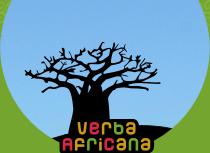The language
The taarab lyrics Kijiti (by Siti binti Saad) and Waridi lisilo miba (by Seif Selim) presented in the Verba Africana DVD Documentation ‘Zanzibar: Taarab and Ngoma Performances’ are composed in Kiswahili, a Bantu language (group G 40 in Guthrie’s classification). Kiswahili mother-tongue speakers live along the East African coast from Somalia to northern Mozambique, including the islands. Kiswahili as a first language is spoken by a few million people but it is widely used as a lingua franca in Eastern Africa (by approximately 50,000,000 people). Kiswahili is the national and official language in Tanzania, Kenya and Uganda, and it is also spoken in Rwanda, Burundi, Congo (DRC), Somalia, the Comoro Islands, Mozambique and Malawi.
The large number of words borrowed from Persian and Arabic led many researchers in the past to define Kiswahili as a mixed language whose catalyst was the language of Arabic immigrants. Today however, it is widely accepted that Kiswahili is a Bantu language that incorporated words from the languages with which it came into contact (Karangwa 1995: 27).
The origins of Kiswahili are often considered to be related to the migration of Bantuphone populations from the Great Lakes area towards East Africa. According to Nurse (1985: 51), around 500 -700 AD a proto-Sabaki speaking population settled in the area between the Tana River and Webi Shebelle, and by the ninth century some proto-Swahili communities had moved towards the sea and settled along the East African coast where they established major Swahili towns.
Due to the historical dispersion of the Swahili-speaking population and to its progressive use as the language of communication, Kiswahili has diversified into a number of dialects and vernacular varieties. The dialect that is spoken in the Zanzibar urban area where the main taarab clubs are located, is kiunguja.
The two texts are very different in their use of language and poetical style. The first song, Kijiti, is attributed to the famous taarab artist Siti binti Saad (1880-1950), and is a good example of the kind of songs performed during taarab sessions at private houses in Ng’ambo during colonial times. The language of the lyrics clearly shows this informal aspect of the performance. Despite conforming largely to Swahili poetical rules in terms of meter and rhyme, the Kijiti lyrics in fact show a rhythm that is very close to prose. It could be seen as a narration in verse, and at a certain point there is also a shift in the narrator. Initially, an external voice tells the story, but later it is the victim herself who explains what happened to her, also using this direct style to reproduce the words of the murderer. Another element in the text is the shift from the past tense to the present tense in the last line, which emphasizes the emotional impact of the song because the final words are presented as if the dead woman was just talking to her murderer. Another feature that reflects the less formal context in which this song was performed is the use of familiar words like foliti, a children’s game, or tende, which literally means 'date' but also refers to a kind of strong homemade alcoholic drink. Another characteristic of the text is the presence of non-standard forms in kiunguja, though at the time of Siti binti Saad the standardization of Kiswahili had already begun, first under the German administration, and then under British rule. The Inter-Territorial Language Committee, the official body founded in 1930 for the standardization and promotion of kiswahili, selected the Zanzibari variant of Kiswahili as the basis for the standard form (Blommaert 1999: 86-87). The Kijiti lyric, however, contains many non-standard kiunguja forms, like alivofanya instead of alivyofanya, nae instead of naye, kenda instead of kaenda, alinambia instead of aliniambia and twenende instead of twende.
The second song, on the other hand, composed in 1960, is in standard Swahili. The structure of meter and rhyme in the poem is very accurate, the language elegant, and the poetical message does not narrate an event but rather expresses feelings through a sequence of images. The male artists who were members of taarab clubs in that period were generally educated in colonial schools and the whole process of the standardization of Kiswahili was further enhanced through the press, which always published poetry sections. For that generation of poets, therefore, a beautiful poem could not be improvised but should be written in a very precise form and in an elegant, sophisticated language. The only peculiarity in the language of the song is found in verbal forms like kikumbuka instead of nikikumbuka. This is commonly employed in poetical language to fit the required number of syllables into the line. Another general linguistic feature of this and the preceding text is the use of the perfective verbal marker ka- which is only used in southern Kiswahili dialects. This verbal marker is used for the third person singular form, without the subject classifier, and its function is similar to the verbal marker -me-, but more emphatic (Bertoncini Zúbková 2000: 157).

